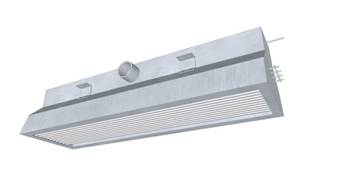Chilled Beams
Chilled Beams
What's the best way to improve energy conservation in the world of HVAC? If there were only one answer to that question, then we could accurately suggest to you the best products to invest in. If you were fortunate enough to have attended the AHR show in recent years, or its international equivalents, you will probably have seen breakthroughs in everything from software to manage the operation of variable speed compressors, to self-programming residential thermostats. Easily put, there's room for plenty of niche applications and products in the HVAC industry. One such niche application is that of the chilled beam system.
For those who may be unfamiliar, a chilled beam system improves energy efficiency by promoting air circulation around a network of pipes (or "beams") that contain water, which is controlled to a specific temperature. The powerhouse of this system is the thermodynamic property of water and air. Since water can store more energy at a given temperature, it can radiate that energy to air in the form of heating or cooling. In the specific case of cooling, as air passes over the chilled beams, it becomes denser and falls to the floor, forcing warm air upward. This natural balance promotes circulation, and as a corollary, forced convection of air in a controlled space.

However, harnessing the power of the universe will only get you so far. In areas where heating is required, some form of forced air delivery system is required to promote comfort, and a supplemental heating system is often necessary. Additionally, special care must be paid to ensure that water temperatures in cooling lines do not fall too low and that the levels of humidity in latent air not become too high. This is to prevent condensation from forming on the water cooling lines. Condensation that forms is known as internal rain and can cause significant damage to a building structure and furnished goods within a controlled space. A redundant air handler is often recommended, to prevent against condensation forming due to primary air handler failure, which would allow humidity to ramp up by recirculating untreated air. Another drawback of the chilled beam system is that large spaces such as auditoriums, gymnasiums, and cafeterias are often too voluminous for a chilled beam system to effectively prevent humidity levels from elevating.

Given all of these conditions, it is evident that precise and accurate measurement of humidity is required when a chilled beam system is recommended. The Dwyer Series RHP-WWall Mount Humidity/Temperature/Dew Point Transmitters feature a field selectable steady state output of humidity or dew point, which will capably assist in controlling humidity levels. The Series RHP Humidity/Temperature Transmitter with radiation shield offers a consistent, long term solution for measuring the moisture balance between external and internal air. Additionally, Dwyer is looking into the development of condensate sensors that may be directly mounted to chilled beams, to initiate a corrective sequence, in the event that moisture begins to condense on beams.
